About the Author
 Charles Liu is a professor of astrophysics at the City University of New Yorks College of Staten Island, and an associate with the Hayden Planetarium and Department of Astrophysics at the American Museum of Natural History in New York. His research focuses on colliding galaxies, quasars, starbursts, and the star formation history of the universe. He earned degrees from Harvard University and the University of Arizona, and did postdoctoral research at Kitt Peak National Observatory and at Columbia University. Along with numerous academic research publications, he also writes the astronomy column Out There for Natural History Magazine. Together with co-authors Neil Tyson and Robert Irion, he received the 2001 American Institute of Physics Science Writing Award for their book One Universe: At Home in the Cosmos. He received the 2005 Award for Popular Writing on Solar Physics from the American Astronomical Society. He lives in New Jersey with his wife, daughter, and sons.
Charles Liu is a professor of astrophysics at the City University of New Yorks College of Staten Island, and an associate with the Hayden Planetarium and Department of Astrophysics at the American Museum of Natural History in New York. His research focuses on colliding galaxies, quasars, starbursts, and the star formation history of the universe. He earned degrees from Harvard University and the University of Arizona, and did postdoctoral research at Kitt Peak National Observatory and at Columbia University. Along with numerous academic research publications, he also writes the astronomy column Out There for Natural History Magazine. Together with co-authors Neil Tyson and Robert Irion, he received the 2001 American Institute of Physics Science Writing Award for their book One Universe: At Home in the Cosmos. He received the 2005 Award for Popular Writing on Solar Physics from the American Astronomical Society. He lives in New Jersey with his wife, daughter, and sons.
Also from Visible Ink Press
The Handy Anatomy Answer Book, ISBN 978-1-57859-190-9
The Handy Answer Book for Kids (and Parents), ISBN 978-1-57859-110-7
The Handy Biology Answer Book, ISBN 978-1-57859-150-3
The Handy Geography Answer Book, ISBN 978-1-57859-062-9
The Handy Geology Answer Book, ISBN 978-1-57859-156-5
The Handy History Answer Book, ISBN 978-1-57859-170-1
The Handy Math Answer Book, ISBN 978-1-57859-171-8
The Handy Ocean Answer Book, ISBN 978-1-57859-063-6
The Handy Physics Answer Book, ISBN 978-1-57859-058-2
The Handy Politics Answer Book, ISBN 978-1-57859-139-8
The Handy Presidents Answer Book, ISBN 978-1-57859-167-1
The Handy Religion Answer Book, ISBN 978-1-57859-125-1
The Handy Science Answer Book, ISBN 978-1-57859-140-4
The Handy Sports Answer Book, ISBN 978-1-57859-075-9
The Handy Supreme Court Answer Book, ISBN 978-1-57859-196-1
The Handy Weather Answer Book, ISBN 978-0-7876-1034-0
Please visit us at .
Copyright 2008 by Visible Ink Press
This publication is a creative work fully protected by all applicable copyright laws, as well as by misappropriation, trade secret, unfair competition, and other applicable laws.
No part of this book may be reproduced in any form without permission in writing from the publisher, except by a reviewer who wishes to quote brief passages in connection with a review written for inclusion in a magazine, newspaper, or web site.
All rights to this publication will be vigorously defended.
Visible Ink Press
43311 Joy Rd., #414
Canton, MI 48187-2075
Visible Ink Press is a registered trademark of Visible Ink Press LLC.
Most Visible Ink Press books are available at special quantity discounts when purchased in bulk by corporations, organizations, or groups. Customized printings, special imprints, messages, and excerpts can be produced to meet your needs. For more information, contact Special Markets Director, Visible Ink Press, www.visibleink.com, or 734-667-3211.
Managing Editor: Kevin S. Hile
Typesetting: Marco Di Vita
Indexer: Lawrence W. Baker
Proofreaders: Sarah Hermsen and Amy Marcaccio Keyzer
ISBN 978-1-57859-193-0
Frontcover images: Young Stars Emerge from Orions Head (NASA/JPL-Caltech/ Laboratorio de Astrofsica Espacial y Fsica Fundamental); Saturns Rings in Visible Light (NASA and E. Karkoschka, University of Arizona); Extreme Ultraviolet Imaging Telescope (EIT) image of a huge, handle-shaped prominence (ESA/NASA/SOHO); and Radio Frequency Telescope (iStock)
Backcover image: Three Moons Cast Shadows on Jupiter (NASA, ESA, and E. Karkoschka: University of Arizona)
Library of Congress Cataloging-in-Publication Data
Liu, Charles, 1968 Apr. 5
The handy astronomy answer book/Charles Liu.
p. cm.
Includes index.
ISBN-13: 978-1-57859-193-0
ISBN-10: 1-57859-193-7
1. Astronomy--Miscellanea. I. Title.
QB52.L58 2008
520--dc22
2008023254
Printed in Malaysia by Imago.
10 9 8 7 6 5 4 3 2 1
Contents
Introduction
W hy do the stars shine? What happens when you fall into a black hole? Whats the Moon made of? Is Pluto a planet or not? Does extraterrestrial life exist? How old is Earth? Can humans live in outer space? What is a quasar? How did the universe begin? How will it end? When it comes to the cosmos, it seems like everyone has a thousand questions.
Well, youre in luckthis book has a thousand answers.
Actually, it contains more than a thousand answers to more than a thousand questions about the universe and how it works. These pages contain far more, though, than a mere compilation of facts and figures. Together, these questions and answers tell the story of astronomyof the cosmos and its contents, and of humanitys efforts throughout history to unlock its secrets and solve its mysteries.
Since the dawn of civilization, people have tried to understand the objects in the heavenswhat they are, how they move, and why. At first, it was a total mystery; our ancient ancestors created myths and stories, and ascribed supernatural qualities to the stars and planets. Slowly, they learned that the heavens and its contents were natural, not supernatural, and that everyone, not just a privileged few, could understand them. Slowly, the science of astronomy was born.
What is science? It sure isnt a bunch of facts in a big thick book that old folks in lab coats think you should memorize, regurgitate, and forget. Science is a process of asking questions and seeking answers by weighing the facts, making educated guesses, and then testing those guesses with predictions, experiments, and observations. Thats what this book is all about: the unquenchable impulse to ask questions and seek answers. Youll read about the questions that were asked, the people who asked them, how they tried to find the answers, and what they discovered in the process. We owe what we know about the universe to the tireless work of those questionersthose men and women who laid the foundation of astronomy, who searched at the frontiers of knowledge.
And that search goes on. In modern times, our species has seen to the edge of the observable universe with ground-based and space-borne telescopes. We have explored distant worlds with robotic spacecraft. We have even started to take our first baby steps into space ourselves. And yet, the more we learn and experience, the more we realize how much we still dont know. This book contains a thousand answers, and thats just a start. May those answers lead you to a thousand more questions; and like those scientific explorers who came before us, may you also experience the joy of discovery as you seekand findthe answers!
Acknowledgments
T hank you, Kevin Hile, for being a great editor, and thank you, Roger Jnecke, for being a great publisher. The two of you, more than anyone else, have shepherded this book to its happy completion. To you and those who work with you, I am grateful!
Thank you to Phillis Engelbert and Diane Dupuis, and to everyone who helped them create The Handy Space Answer Book back in the late-20th century. Their efforts planted the seed that eventually sprouted this book. Nice work!




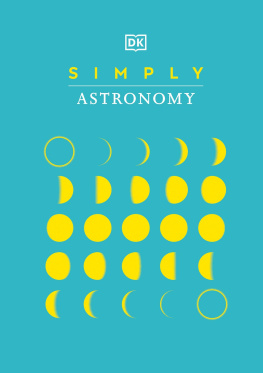
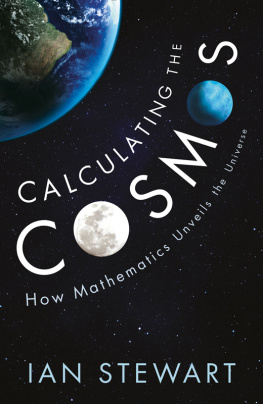

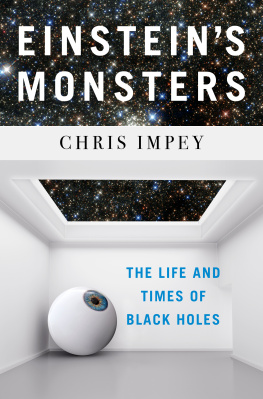
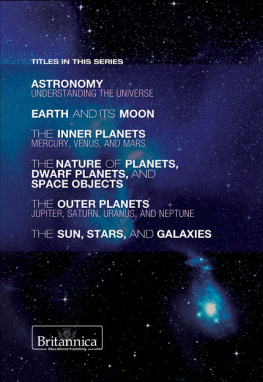
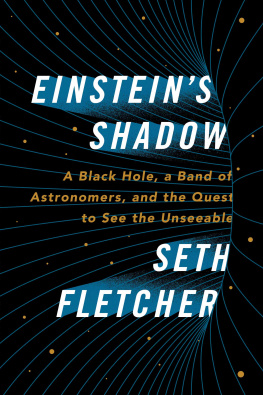
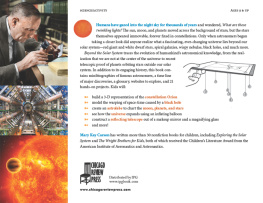
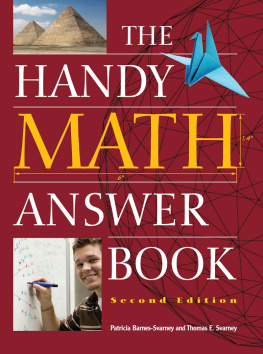

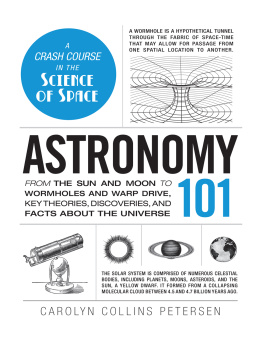
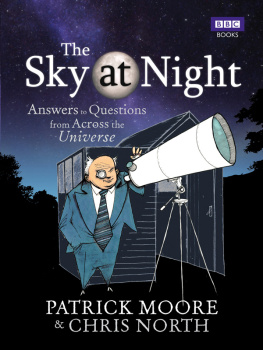

 Charles Liu is a professor of astrophysics at the City University of New Yorks College of Staten Island, and an associate with the Hayden Planetarium and Department of Astrophysics at the American Museum of Natural History in New York. His research focuses on colliding galaxies, quasars, starbursts, and the star formation history of the universe. He earned degrees from Harvard University and the University of Arizona, and did postdoctoral research at Kitt Peak National Observatory and at Columbia University. Along with numerous academic research publications, he also writes the astronomy column Out There for Natural History Magazine. Together with co-authors Neil Tyson and Robert Irion, he received the 2001 American Institute of Physics Science Writing Award for their book One Universe: At Home in the Cosmos. He received the 2005 Award for Popular Writing on Solar Physics from the American Astronomical Society. He lives in New Jersey with his wife, daughter, and sons.
Charles Liu is a professor of astrophysics at the City University of New Yorks College of Staten Island, and an associate with the Hayden Planetarium and Department of Astrophysics at the American Museum of Natural History in New York. His research focuses on colliding galaxies, quasars, starbursts, and the star formation history of the universe. He earned degrees from Harvard University and the University of Arizona, and did postdoctoral research at Kitt Peak National Observatory and at Columbia University. Along with numerous academic research publications, he also writes the astronomy column Out There for Natural History Magazine. Together with co-authors Neil Tyson and Robert Irion, he received the 2001 American Institute of Physics Science Writing Award for their book One Universe: At Home in the Cosmos. He received the 2005 Award for Popular Writing on Solar Physics from the American Astronomical Society. He lives in New Jersey with his wife, daughter, and sons.